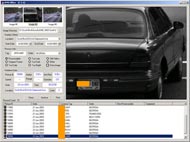4/2/2006
Georgia: Accidents Increased with Red Light CamerasGeorgia red light cameras are raising cash, accident rates, and the number of injuries.

The Atlanta Journal-Constitution reviewed accident data at a number of intersections across Georgia and found accidents and injuries are increasing, not decreasing, as a result of the use of red light cameras. Cities employing these devices are, however, generating substantial revenue from their photo ticket programs.
In Marietta, rear-end collisions increased 49 percent from 65 to 97 from 2004 to 2005. At the intersection of Cobb Parkway and Windy Hill road, there were 108 accidents of all types in 2004 and 163 in 2005. Since their installation, red light cameras have generated $2.7 million for the city.
In Duluth, accidents increased 21 percent, from 75 to 91, between March 2004 and February 2005 compared with March 2005 and February 2006. The city's lone camera made $790,000 in the current fiscal year and should make a million the next.
In the same period, Lilburn accidents increased 24 percent, from 37 to 46. The camera at US29 and Indian Trail, rear end accidents have doubled since June 2004, with angle collisions dropping from 22 to 18. That decrease did not, however, represent a net safety benefit. The increase in accidents included a 128 percent increase in the number of injuries, from 7 to 16. Lilburn generated $236,000 in revenue (equivalent to a yearly rate of $404,000) with just one camera.
Eric Skrum, communications director for the National Motorists Association says the data show cameras are not working as promised. "These devices don't increase safety at all," he said, "I certainly don't consider it a safety improvement when you have more of one type of accident and less of another."
Snellville generated $892,000 in revenue since September. The observed increase in accidents confirms the findings of a number of independent red light camera studies that found collisions increased, and did not decrease over as much as five or six years.


